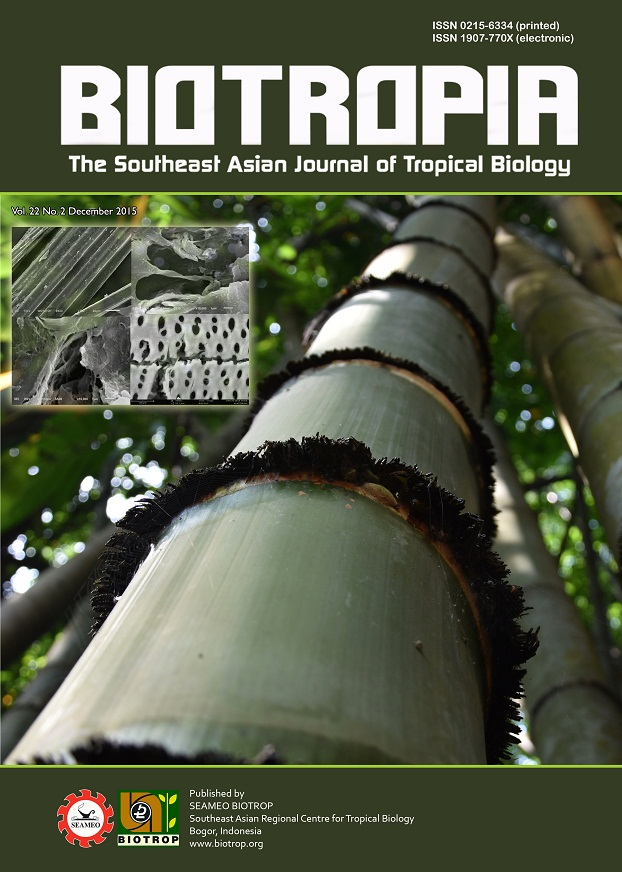
Tags
Diversity of Epiphytic Orchids and Host Trees (Phorophytes) in Secondary Forest of Coban Trisula, Malang Regency, East Java, Indonesia Siti Nurfadilah
Content Language : English

Introduction: Epiphytic orchids are an integral component of forest ecosystems that contributes to a high proportion of plant diversity. Host trees are a natural habitat requirement of epiphytic orchids on which the orchids live on. The aim of this study was to investigate the diversity of epiphytic orchid and the host tree in a secondary forest of Coban Trisula (the Trisula waterfall) in a Mount Bromo area. Two line transects were used, with each line transect of 150 m x 10 m was divided into 15 plots (the size of each plot 10 m x 10 m), resulting in the total number of 30 sampling plots at the study site. Data (the species name and number of individuals of epiphytic orchid, the species name and number of individuals of host tree species, vertical distribution of the epiphytic orchids on the host tree, and environmental factors (temperature and relative humidity) were recorded in each plot.
Results: There were 15 epiphytic orchid species, 13 genera in the secondary forest of Coban Trisula. Appendicula angustifolia was the most abundant epiphytic orchid species (Relative abundance of orchids; % Fo=52,4%), followed by Trichotosia annulata (% Fo=29,9%). There were nine host tree species on which the orchids attached. Number of host tree species of each orchid species varied, from one to five host tree species. Trichotosia annulata was an orchid that had the highest number of host tree species; 5 species). Castanopsis javanica, was a host tree on which the highest number of individual orchids attached (Ji/Jt= 589,5), followed by Engelhardia spicata (Ji/Jt=425,67). The greatest abundance of epiphytic orchids was on zone 3 and zone 4. Mean temperature was 22,2⁰C, and relative humidity was 72,8 % at the site.
Conclusion: The secondary forest of Coban Trisula had a diverse epiphytic orchid species and the host tree species. Management of orchid conservation is required to protect the diversity of orchids and the host tree species in the secondary forest in Coban Trisula from the potential human disturbances as Coban Trisula is one of tourist destinations.
Link

This work is licensed under a Creative Commons Attribution-NonCommercial-NoDerivatives 4.0 International License.
